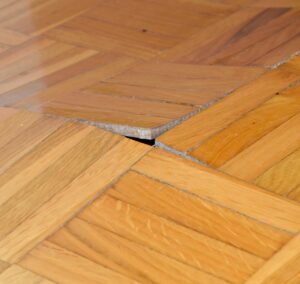Your home was inundated with floodwaters during a recent storm or natural disaster. After the water subsides, you return home to assess the damage. While there are many places to start, one part of your home that should be prioritized in the clean-up is your floors. If your floors are made of wood, you need to be urgent so you can get whatever additional repairs and restorations are necessary sooner than later. The steps for restoring water-damaged wood floors include the following steps:
Step 1: Dry Your Water Damaged-Wood Floors As Soon As Possible
Begin drying your water-soaked wood floors as soon as possible. Letting the water sit any longer could lead to cupping. When there is cupping in wood floors, the wood absorbs the water and expands it to form a concave spot. You also want to prevent any water staining. Instead of throwing as many towels on your floor to soak up the water, it is actually recommended that you set a vacuum to wet mode and clear out the water that way. Once dried, it’s recommended to scrub the floor with a brush using a mild detergent and disinfectant.
Step 2: Check For Mold Or Mildew In Your Water-Damaged Wood Floors
After drying your floors, the next step in restoring water-damaged wood floors will be to check for mold or mildew. Sometimes mold or mildew will be more obvious in appearance, but there’s a possibility that you might miss it in its most minuscule form. One of the easiest ways to determine the possible presence of mold your mildew on your wood floors is during the initial drying and cleaning stage. If there are dark spots that seem to resemble dirt that doesn’t seem to be disappearing, there’s a good chance it is mold or mildew.
Another sign that there might be mold or mildew in your wood floors is if there are any peculiar odors that don’t seem to evaporate which is particularly potent when in proximity to your wood floors. If the mold or mildew is minimal, you should be able to treat it yourself. If the growths are of notably huge size, you will need to involve a professional.
Step 3: Assess The Damage
Aside from cupping and mildew or mold, you should take time to assess your wood floors for any additional water damage. These additional signs of water damage include warped boards and discoloration. Unlike cupped boards, warped boards aren’t just concave. They are raised, softened, curled, and expanded, making wood floors very unsteady. The discoloration is characterized by leaving wood floors with a conspicuous washed-out appearance or traces of obvious white streaks. If you find these kinds of water damage in your wood floors, it is time for you to take the next step in the restoration process.

Step 4: Consult A Professional
After drying your floors, and assessing the overall condition of the floors, reach out to a professional if the damages are severe enough to require such interventions. While a DIY approach may be tempting, a professional will be better prepared to address severe cases of water damage. You will then need to consider the following routes for the remainder of the restoration process: Do you want your floors sanded or not? If your boards need to be replaced, do you want to use different wood flooring material? Do you want a basic, to-the-point restoration, or do you want your restoration to segue into a refinishing project?
We Will Give Your Wood Floors A Good-As-New Restoration!
Now that you know how to start the process of restoring water-damaged wood floors, you probably want to know which services will be the best to undertake this restoration. If you live in the Greater Houston area, ASAP Restoration will be at your disposal to restore your wood floors to be better than before. Contact us for the best water damage treatment in not only Greater Houston, but all of Texas.

